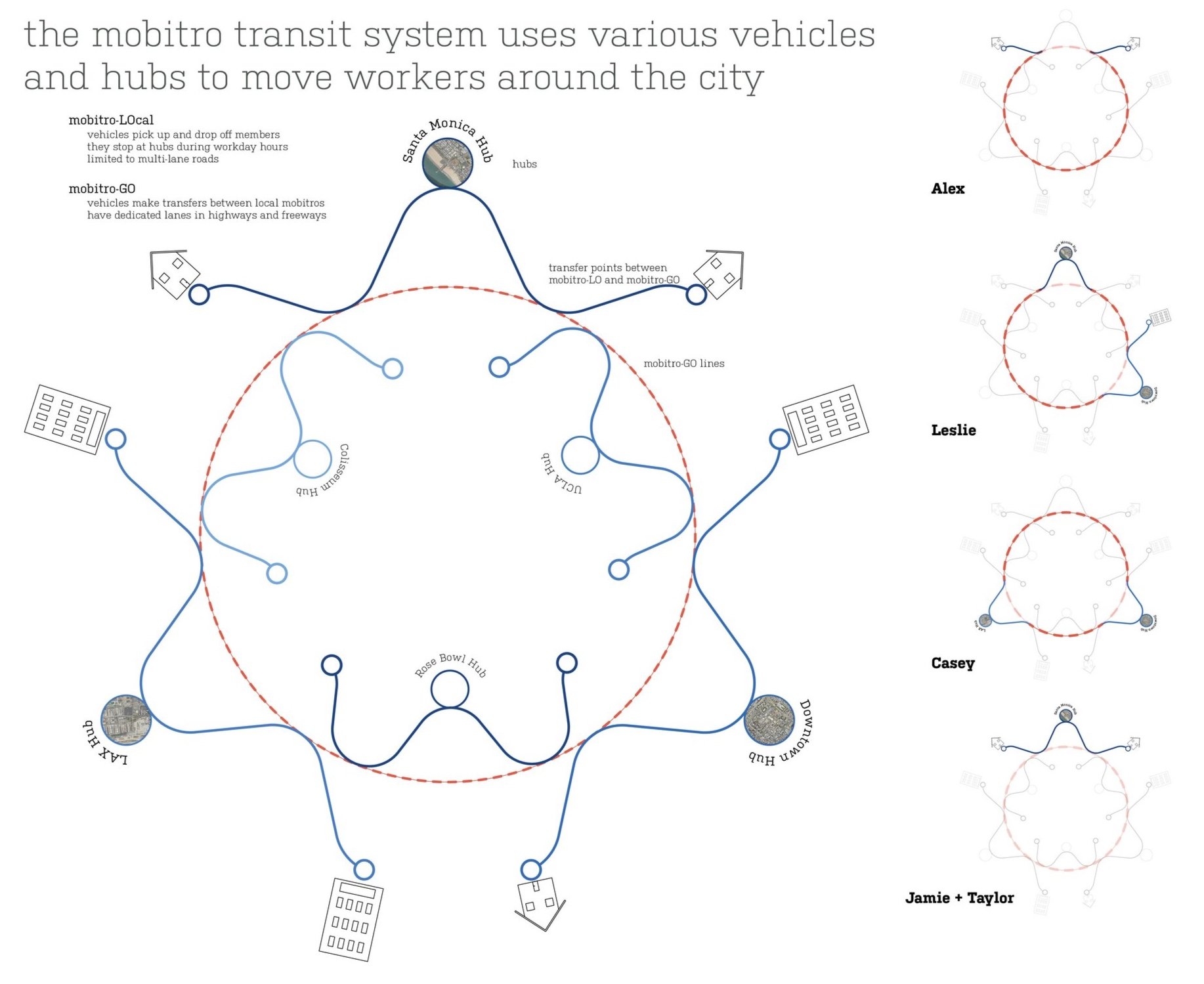Hypermobile Work
Although new work patterns are driven by advancements in mobile technology, the design of transportation systems and physical work spaces lag in their ability to adapt to the speeds and spatial freedoms of work time. Hypermobility proposes a model of work that transforms the last void of non-work time in Los Angeles into one of productivity: the commute.
CLIENT
RESEARCH TEAM
Corina Ocanto, Andrew Akins, Graeme Moody
SERVICES
Future Casting, Research Design, Innovation Consulting
What if the daily commute could become a way to get back time and improve reach in the city?
Research
Our research team was challenged with finalizing three years of research about the future of work in the urban city of Los Angeles at multiple scales.
We were interested in tackling the legendary L.A. commute to help think about how Angelenos could make the best use of their time and reach the multiple centers of interest in the city.
One of the teams’ considerations was to rethink mass transportation and ride share models as part of the proposal.
System Design
The proposed system, mobitro, takes into consideration transit patterns like time, volume, and locations in demand combined with new modes of automated and ride share transportation.
A self-driving bus changes routes based on membership needs to provide a mobile working environment on the highways that connect popular L.A. destinations.
User Personas & Journeys
A plan for a three-month launch study was made to ensure that key learnings could be informed by a variety of research methods. The research was organized to ensure understanding around both what is happening in the pilot and why.
Community Engagement
The research project visualizations were shared with the public through an exhibit made of recycled materials, and a panel discussion with the city planning department, transportation experts, and business leaders.












